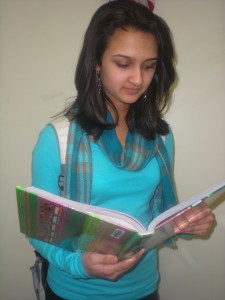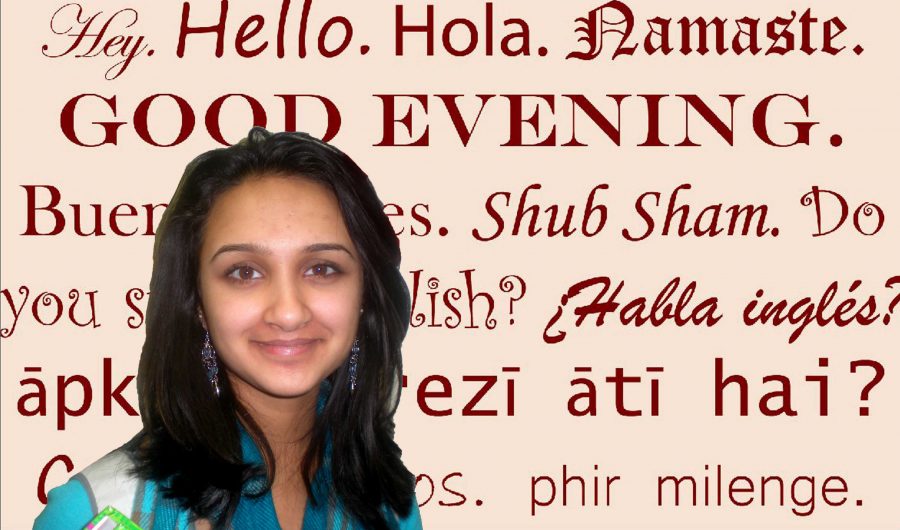Sophomore Esha Munshi wakes from a muddled dream. Words and memories swirl around her head, fragments just out of her reach. Munshi’s dream, however, differs from the average American teenager’s. She dreams in a mixture of four different languages.

Munshi walks down the stairs, sleep lingering in her eyes, and greets her parents, effortlessly selecting the right Gujarati words from her vast vocabulary. She’s been speaking the language since her birth, after all.
Later, she and her brother will chatter over the breakfast table in a mixture of Gujarati and English, a language that Munshi became familiar with in preschool. It’s the main language she uses to talk to her friends as well.
Though fluent in both languages, ideas can be lost in translation.
Thoughts will push at the edges of Munshi’s mind, waiting to be released in the form of words. Sometimes, though, those thoughts can only be expressed correctly in one language. There’s just no true translation.
A third language adds more complexity to the linguistic puzzle. When in India, Munshi must concentrate on swapping between Gujarati and her third language, Hindi, one of the official languages of India. Indian movies and television shows are all filmed in Hindi, so knowing the language is a must for Munshi.
Though she can cycle through all three languages easily on a daily basis, her fourth language requires more brain power. Words no longer flow easily, abundantly, freely; they must be coaxed carefully into existence. Munshi, like many other HHS students, is learning how to speak Spanish.
Later, she will return home after a long day of hellos and goodbyes, questions and answers, whispers and thoughts. She will greet her family in a mixture of English and Gujarati, and then settle down for another night of dreams that float through the barriers of language.


HP • Apr 16, 2017 at 8:03 am
Awesome !!! congratulations..